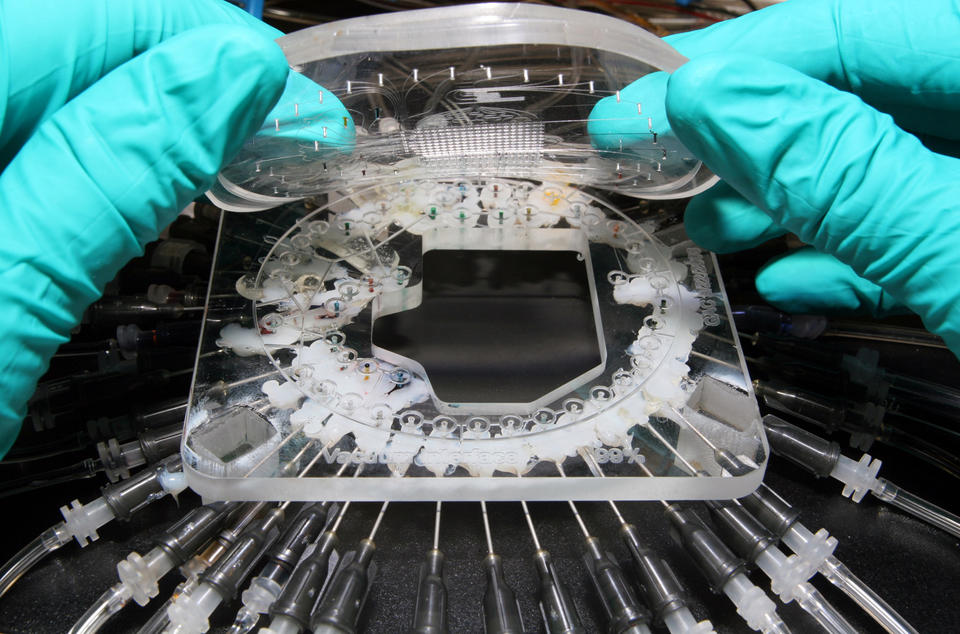Fluid Measurements

Many critical processes in medical diagnostics, molecular biology, genetics, pharmaceuticals, biophysics, chemistry, nanotechnology and precision fabrication depend heavily on microfluidics at ever smaller volumes. They demand exacting control and analysis of the properties of a single liquid component (such as drugs, blood or suspended nanoparticles) or of multiple fluids organized into complex networks, typically in arrays of microchannels around tens to hundreds of micrometers wide embedded in blocks of glass or polymers.
NIST is devising a range of new tools and techniques — often at chip scale — that can ensure high-accuracy flow measurements at the drastically reduced sample sizes and high throughput today’s applications need. Promising projects include development of electrical and photonic sensors as well as novel ways of probing fluids with microwaves and other means.
In addition, NIST is working to satisfy the growing demand for microfluidic standards traced to a primary reference source, to devise new ways to ensure that results are consistent from device to device and to allow those devices to interconnect with “plug and play” compatibility. None of those conditions exists at present; all are goals of intense NIST research.
Click on the boxes below to explore the technology in more detail.
Flow and Pressure On-Chip Measurements of Biofluids and CellsSLowFlowS Gas Flow Standard

